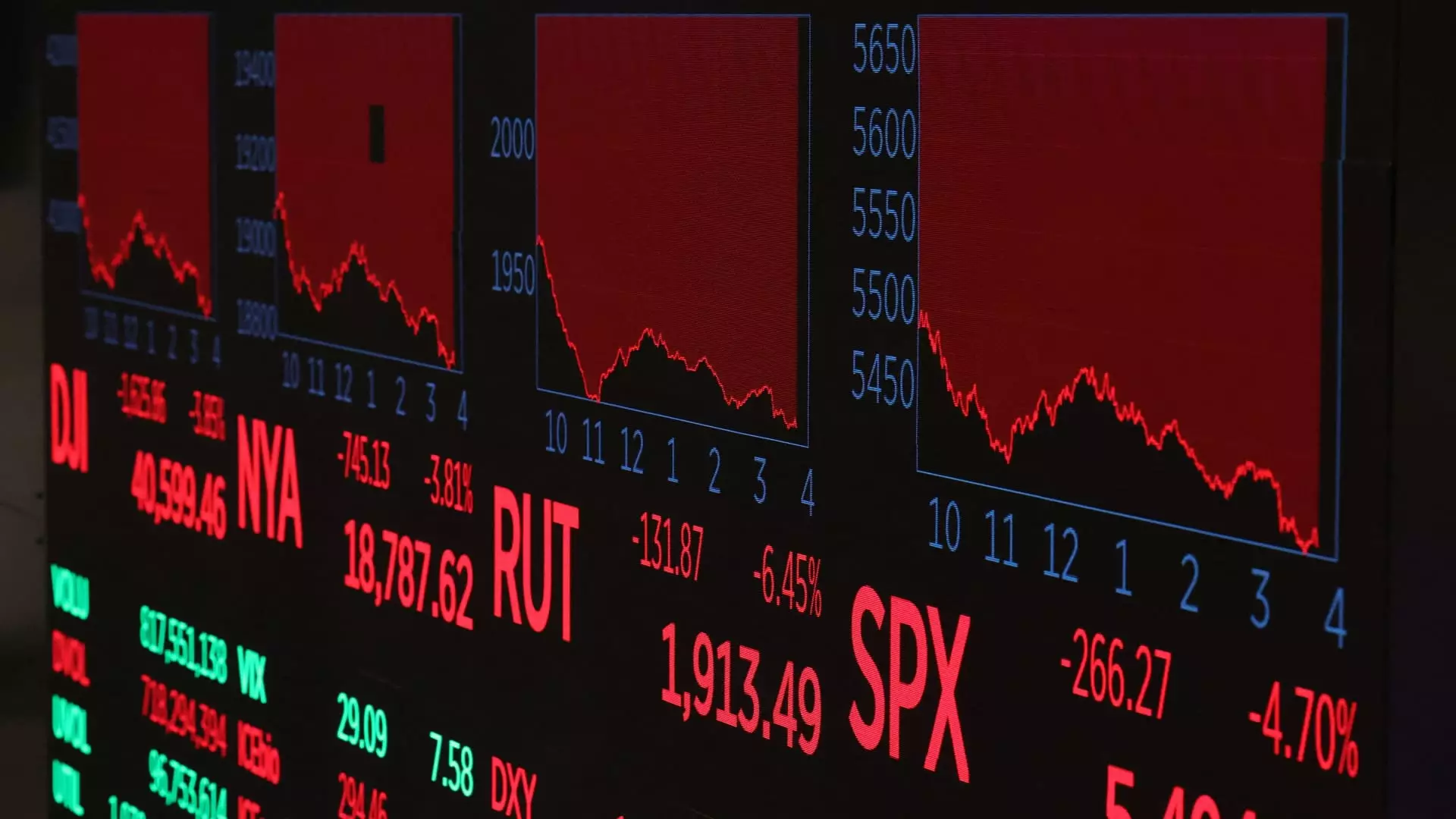In a landscape often dominated by institutional investors and complex financial maneuvers, the recent activities of retail investors reveal a vibrant and growing faction in the stock market. As tensions escalate in the economic realm, primarily fueled by ambiguous tariff policies under President Donald Trump, everyday individuals are becoming increasingly involved in the financial markets. These retail investors, far from retreating in fear, are seizing what they perceive as a strategic opportunity—a sentiment captured by many during last week’s volatility.
Rachel Hazit, a Philadelphia-based marketer, embodies this shift. At only 32 years old, she has taken a proactive approach to investing, viewing market dips as golden opportunities to buy stocks potentially at lower prices. This mentality aligns with the age-old wisdom of “buying the dip.” Hazit and her peers are reshaping the narrative around market fluctuations, starkly contrasting with the nervousness radiating from Wall Street, where large investors remain cautious due to a myriad of economic warnings, including fears of recession and inflation.
The Contradiction of Fear and Investment
While market analysts were swiftly adjusting their outlooks in response to Trump’s initial tariff announcements—predicting a bear market and recession—retail traders displayed a rare resilience. Rather than capitulating to fear, they charged into the market, bolstering their positions like never before. With a staggering net inflow of $8.8 billion into U.S. stocks over a short timeframe, the behavior of retail investors paints a compelling picture of optimism amidst chaos.
This sudden influx of cash from everyday investors marked the largest daily net purchases on record, as they defied conventional wisdom, which typically implies that panic selling is the norm during downturns. Instead, figures from firms such as Vanda Research indicate that retail investors doubled down, revealing a confidence that many institutional traders, riddled with uncertainty, lacked. This poses an intriguing question: Is the resilience of the retail investor sustainable, or is it merely an illusion of confidence cloaked in economic turbulence?
Market Dynamics: The Role of Social Influence
The surge in retail investment is also reflective of the broader influence of social media and online communities, where investment strategies are being disseminated at an unprecedented rate. Figures within this space—like Tori Dunlap, who advocates for financial literacy among women and minorities—are equipped with the tools necessary to foster an empowered investment community. They emphasize that “millionaires are made during market downturns,” promoting a proactive investment strategy over reactive panic.
This cultural phenom of investing has captured the attention of many, encouraging novice investors to jump in regardless of the surrounding economic uncertainty. However, this shift raises significant concerns. Are we witnessing a potentially dangerous cycle where individuals are disregarding fundamental economic indicators for the thrill of market speculation?
The Risks and Realities of Retail Investment
As retail investors embrace a bold strategy of purchasing during downturns, they are inadvertently increasing their exposure to a market fraught with volatility. The CBOE Volatility Index has remained high, illuminating the broader risks that exist under such turbulent conditions. This complex dynamic reveals a kind of paradox for some investors—while they argue that buying into market dips has historically been sound advice, the current climate presents risks unlike those seen in the past.
One retail investor articulated a common concern by highlighting the obligation of meeting immediate financial needs even as market conditions encourage investments. This reflects a tension between the favorable long-term outlook of investing and the immediate pressures many face from economic realities. It’s essential to recognize that while investing carries the potential for significant reward, the landscape is fraught with risk that cannot be ignored.
A Center-Right Perspective on the Economic Landscape
From a center-right perspective, the unfolding events necessitate a deeper conversation regarding the implications of such economic policies, particularly Trump’s tariff strategies. While the apparent optimism within retail investors is commendable, it is overshadowed by a stark concern for the long-term effects of uncertain economic policies. Hazit’s trepidations offer insight into how tariffs could undermine consumer purchasing power, a concern echoed by many within the investor community.
This dissonance illustrates that while personal investment strategies may be reaping rewards in the short term, the overarching economic environment remains precarious. The allegiance to “buying the dip” should not overshadow critical assessments of broader market health, long-term sustainability, and the socio-political actions that could affect the average consumer deeply.
Overall, while retail investors are pushing against the tide of fearful institutional responses, the long-term outlook remains uncertain, illustrating the dual nature of participation in a complex financial landscape. The pivotal question remains: can the resolve of retail investors navigate the tides of market unpredictability, or will external economic pressures eventually win out?

